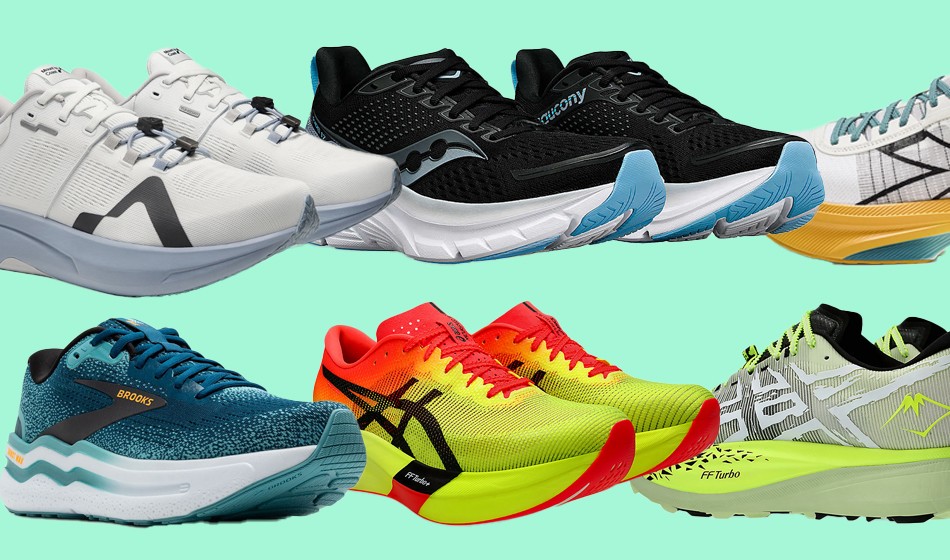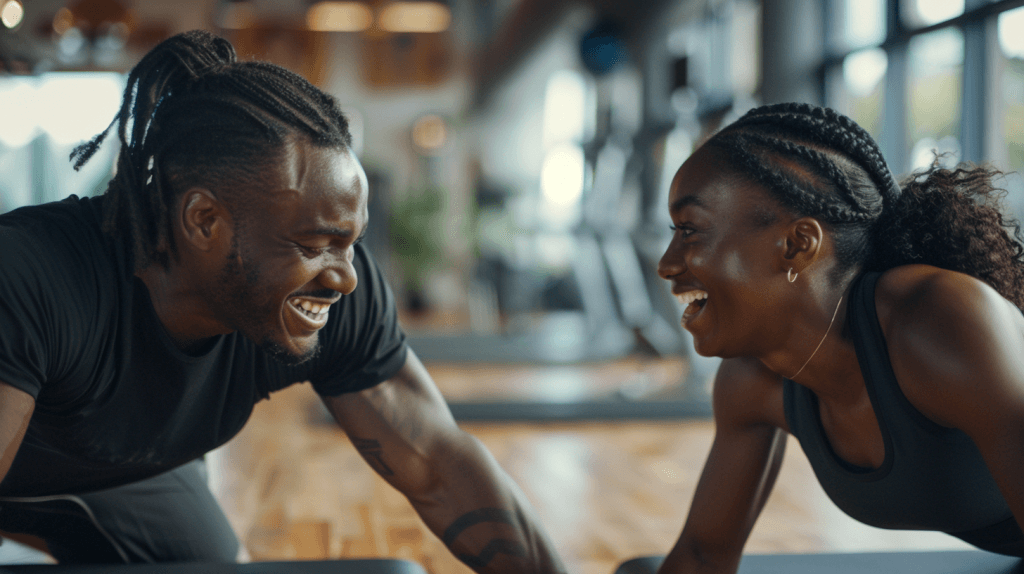Selecting the right running shoes is crucial for enhancing your performance and minimizing the risk of injuries. With various pronation types and shoe technologies available, understanding your unique running style can significantly impact your comfort and efficiency on the track or trail. This article provides a comprehensive guide to help you assess your running style, identify key features to look for in running shoes, and leverage modern shoe technology to improve your overall running experience. By following these insights, you can make informed decisions that lead to better performance and greater enjoyment in your running journey.
In this article you will find:
Understanding Your Running Style
Choosing the right running shoe starts with a fundamental understanding of your running style. Every runner is unique, and identifying how you run can significantly influence your performance and comfort. This section delves into the different types of running styles and how they impact your choice of footwear.
Types of Running Styles
Running styles can generally be categorized into three main types: neutral pronation, overpronation, and underpronation (or supination). Understanding which category you fall into is crucial for selecting the most suitable shoes.
- Neutral Pronation: Runners with neutral pronation have a well-balanced gait, where the foot lands on the outer edge and rolls inward slightly. This style is often associated with less risk of injury and allows for a wider range of shoe options.
- Overpronation: Overpronators experience excessive inward rolling of the foot upon landing. This can lead to a higher risk of injuries such as shin splints and plantar fasciitis. Shoes designed for overpronators typically feature additional stability and support.
- Underpronation (Supination): Runners who underpronate have a tendency to roll their foot outward, which can lead to a lack of shock absorption. These runners benefit from shoes that provide extra cushioning and flexibility to promote better alignment.
Assessing Your Running Style
To accurately assess your running style, consider the following methods:
- Gait Analysis: Many specialty running stores offer gait analysis services. By observing your running on a treadmill or through video analysis, experts can identify your pronation type and recommend appropriate footwear.
- Footprint Test: An easy at-home method involves wetting your foot and stepping onto a piece of paper to see your footprint. A flat foot suggests overpronation, while a high arch indicates underpronation.
- Trial Runs: Testing different shoes while running can provide invaluable insights. Pay attention to how each pair feels during your run, noting any discomfort or support issues.
The Importance of Running Style in Shoe Selection
Understanding your running style is not just about comfort; it can also enhance your performance. For example, wearing shoes that match your pronation type can help reduce the risk of injuries and improve your overall running efficiency. A well-fitted shoe can provide the right balance of cushioning and support, allowing you to focus on your run without the distraction of discomfort.
Moreover, modern technology in running shoes has evolved to cater specifically to different running styles. Brands like Nike and Adidas offer lines that address various needs based on gait analysis, ensuring that runners can find their perfect match.
In summary, understanding your running style is a crucial first step in unlocking athletic success. By identifying whether you are a neutral runner, overpronator, or underpronator, you can make informed decisions when selecting running shoes that enhance your performance and comfort.
Key Features to Look for in Running Shoes
When it comes to selecting the perfect running shoes, understanding the key features is essential for enhancing both performance and comfort. With a plethora of options available on the market, knowing what to prioritize can make a significant difference in your running experience. This section will explore the critical features to consider when choosing your next pair of running shoes.
Cushioning
Cushioning is one of the most important aspects of running shoes. It absorbs impact and provides comfort, especially during long runs. There are different types of cushioning systems, including:
- Foam Cushioning: Commonly used in many running shoes, foam cushioning offers a soft feel while still providing support. Look for EVA (Ethylene Vinyl Acetate) foam, which is lightweight and responsive.
- Gel Cushioning: Some brands, like ASICS, incorporate gel technology for enhanced shock absorption. This feature is particularly beneficial for runners who experience joint discomfort.
- Air Cushioning: Nike and other manufacturers use air pockets for cushioning that compress during impact, providing a unique responsive feel.
Support and Stability
For runners prone to injuries or those with specific pronation types, support and stability features are vital. Shoes designed for stability often include:
- Medial Posts: A firmer foam located on the inner side of the shoe helps to control overpronation.
- Heel Counter: A structured heel counter provides additional support and helps maintain alignment.
- Arch Support: Depending on your foot arch, look for shoes with adequate arch support to maintain comfort and reduce fatigue.
Breathability
Running can generate a lot of heat, making breathability a crucial feature in running shoes. Shoes with breathable mesh uppers allow for improved airflow, keeping your feet cooler and reducing the risk of blisters. Look for:
- Mesh Uppers: Lightweight and ventilated, they promote airflow while providing a snug fit.
- Moisture-Wicking Linings: These materials help wick away sweat, keeping your feet dry and comfortable during runs.
Weight
The weight of running shoes can significantly affect your performance. Lighter shoes can enhance speed, while heavier shoes may offer more support and durability. When selecting a shoe, consider:
- Minimalist Shoes: Designed for speed, these shoes often have less cushioning and are lightweight, making them ideal for experienced runners.
- Maximalist Shoes: These provide more cushioning and support, making them suitable for long-distance runners who prioritize comfort.
Fit and Sizing
A proper fit is essential for preventing injuries and enhancing performance. When trying on running shoes, keep the following in mind:
- Length: There should be about a thumb’s width of space between your longest toe and the end of the shoe.
- Width: Ensure the shoe isn’t too tight around the sides, as this can lead to discomfort.
- Try with Running Socks: Always test shoes with the socks you intend to wear during runs for the best fit.
In conclusion, understanding these key features will empower you to select running shoes that not only fit well but also enhance your performance and comfort. For more insights on running shoes and their benefits, consider checking out Runner’s World, which provides comprehensive reviews and recommendations.
The Impact of Shoe Technology on Performance
In the ever-evolving world of running, shoe technology plays a pivotal role in enhancing performance and improving comfort. As manufacturers invest in innovative materials and design techniques, runners can take advantage of advancements that cater to their specific needs. This section explores how modern shoe technologies can impact your running experience and overall performance.
Responsive Cushioning Systems
One of the most significant advancements in running shoe technology is the development of responsive cushioning systems. These systems are designed to provide optimal shock absorption while enhancing energy return, making each stride more efficient. Key technologies include:
- Boost Technology: Popularized by Adidas, Boost foam is composed of thousands of energy capsules that provide incredible energy return, allowing for a more dynamic running experience.
- React Foam: Nike’s React technology offers a soft yet responsive cushioning that helps minimize fatigue, making it ideal for long-distance runs.
- Hoka One One’s Meta-Rocker: This design promotes a smooth transition from heel to toe, enhancing the natural gait cycle and encouraging faster running speeds.
Lightweight Materials
Modern running shoes utilize lightweight materials that reduce the overall weight without compromising durability or support. This reduction in weight can lead to improved speed and agility. Innovations in material technology include:
- Engineered Mesh Uppers: These provide breathability and flexibility while maintaining structural integrity, allowing for a snug fit that adapts to foot movements.
- Lightweight Foam Compounds: New foam materials are being developed that offer the necessary cushioning while being significantly lighter than traditional options, helping runners feel less weighed down.
- Carbon Fiber Plates: Found in some high-end racing shoes, carbon fiber plates provide stiffness and propulsion, enabling a more efficient transfer of energy during runs.
Advanced Traction Technologies
Traction is essential for maintaining stability and grip on various surfaces. Advanced traction technologies have emerged to enhance performance, especially in challenging conditions:
- Multi-Directional Outsoles: Shoes designed with multi-directional tread patterns offer superior grip on both wet and dry surfaces, improving safety and confidence.
- Sticky Rubber Compounds: Many brands incorporate sticky rubber in their outsoles, enhancing traction and durability, particularly for trail runners.
- Adaptable Traction Systems: Some innovative designs feature outsoles that can adapt to different terrains, offering versatility for various running environments.
Personalized Fit Technologies
The importance of a proper fit cannot be overstated. Advances in personalized fit technologies allow runners to find shoes that cater specifically to their foot shape and running style:
- 3D Scanning and Printing: Some brands offer personalized insoles created from 3D scans of your feet, ensuring a customized fit that enhances comfort and performance.
- Adaptive Lacing Systems: Shoes with adaptive lacing systems can provide a more secure fit, reducing the risk of blisters and discomfort during runs.
Environmental Considerations
With an increasing focus on sustainability, shoe manufacturers are also incorporating eco-friendly technologies. Using recycled materials and sustainable production methods can positively impact the environment while still delivering high-performance shoes.
In summary, the impact of shoe technology on performance is profound. By understanding and leveraging these advancements, runners can enhance their training, reduce the risk of injury, and achieve their personal bests. For more information on the latest innovations in running shoe technology, check out Runner’s World, which provides detailed insights into the latest trends and technologies.
Tips for Finding the Perfect Fit
Finding the perfect fit for your running shoes is crucial for optimizing performance and preventing injuries. An ill-fitting shoe can lead to discomfort and a host of running-related issues. This section outlines essential tips to ensure you find the best fit for your unique foot shape and running style.
Measure Your Feet Regularly
Foot size can change over time due to various factors such as age, weight, and activity level. Therefore, it’s essential to measure your feet regularly. Here’s how:
- Use a Brannock Device: This tool measures both the length and width of your foot. Many running stores have this device available, and it’s highly accurate.
- Measure in the Evening: Feet tend to swell throughout the day, so measuring in the evening can help you find a more accurate size.
- Check for Width: Don’t just focus on length; consider the width of your feet as well. A shoe that’s too narrow can lead to blisters and discomfort.
Try Shoes on with Running Socks
When trying on running shoes, always wear the socks you plan to use during your runs. This will help you gauge how the shoes will feel during actual runs. Here are some additional tips:
- Bring Your Own Socks: If you have specific running socks that you prefer, bring them along to the store for an accurate fit.
- Consider Thickness: Different socks can vary in thickness; ensure you account for this when trying on shoes.
Walk and Run in the Shoes
Don’t just stand still in your new shoes; test them out by walking and running. Here’s what to look for:
- Comfort: The shoes should feel comfortable immediately. There should be no pinching or discomfort in any area.
- Space at the Toe: Ensure you have about a thumb’s width of space between your longest toe and the front of the shoe. This allows for movement during runs.
- Heel Fit: Your heel should fit snugly without slipping. A good heel fit helps maintain stability.
Consider the Shoe’s Purpose
Different types of running shoes serve various purposes, so it’s essential to consider your specific needs:
- Training Shoes: These are designed for daily training and should offer adequate support and cushioning.
- Racing Flats: Lighter and more minimalistic, these are ideal for speed work and races but may lack the support needed for longer distances.
- Trail Shoes: If you run on trails, look for shoes with enhanced traction and protection for uneven terrain.
Consult with Experts
Don’t hesitate to seek advice from professionals. Here are some ways to get expert input:
- Visit Specialty Running Stores: Staff at these stores are often knowledgeable about different brands and models and can help you find the right fit.
- Get a Gait Analysis: Some stores offer gait analysis to determine your running style and recommend shoes based on that.
- Ask Fellow Runners: Engaging with the running community can provide insights and recommendations based on personal experiences.
Don’t Rush the Decision
Finding the perfect fit is essential, and rushing the process can lead to poor choices. Take your time and consider the following:
- Try Multiple Pairs: Don’t settle for the first pair you try on. Test several options to compare comfort and fit.
- Take Your Time: Spend at least 10-15 minutes in the shoes to assess how they feel during movement.
In conclusion, taking the time to find the perfect fit is vital for your running performance and overall comfort. For more detailed advice on shoe fitting and recommendations, visit Runner’s World, which offers comprehensive guides on running shoe selection and fitting. Choosing the right running shoes is essential for enhancing performance and preventing injuries. To find the perfect fit, start by measuring your feet regularly, considering both length and width. Always try on shoes with the running socks you plan to use, and walk or run in them to assess comfort and fit. Look for shoes that cater to your specific running style, whether you have neutral pronation, overpronation, or underpronation.
Key features to consider include responsive cushioning systems for shock absorption, support and stability features for injury prevention, and lightweight materials for improved speed. Additionally, consult with experts at specialty running stores and don’t rush the decision—test multiple pairs to ensure you make an informed choice. For further guidance, resources like Runner’s World provide valuable insights into shoe selection and fitting.




